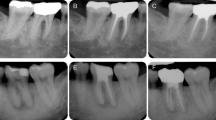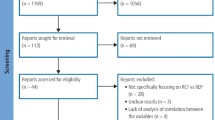Abstract
The aim of this study was to analyze the specific influence of root canal anatomy on the accessibility of working length during root canal therapy. Four hundred seventy‐six root canal therapy cases (amounting to a total of 1 005 root canals) were examined. The anatomy risk factors assessed in each case included: tooth type (tooth location), root canal curvature, and root canal calcification, as well as endodontic retreatment. The investigation examined the correlation between each of these anatomic factors and the working length, with statistical analysis consisting of Chi‐square tests and multiple logistic regression analysis. In an independent factor analysis, tooth type (tooth location), root canal curvature, canal calcification, and endodontic retreatment were determined to be the primary risk factors. In a multiple‐factor regression model, root curvature and canal calcification were found to most significantly influence root canal working length accessibility (P<0.05). Root canal anatomy increases the difficulty of root canal preparation. Appropriate consideration of tooth anatomy will assist in accurate determination of preparation difficulty before instrumentation. This study alerts clinical therapists to anatomical factors influencing the working length accessibility, and allows for a direct estimate of success rate given in situ measurements of tooth factors during the root canal treatment procedure.
Similar content being viewed by others

Article PDF
Author information
Authors and Affiliations
Corresponding author
Rights and permissions
About this article
Cite this article
Tang, L., Sun, T., Gao, X. et al. Tooth anatomy risk factors influencing root canal working length accessibility. Int J Oral Sci 3, 135–140 (2011). https://doi.org/10.4248/IJOS11050
Received:
Accepted:
Published:
Issue date:
DOI: https://doi.org/10.4248/IJOS11050
Keywords
This article is cited by
-
Expert consensus on difficulty assessment of endodontic therapy
International Journal of Oral Science (2024)
-
Micro-CT assessment of radicular pulp calcifications in extracted maxillary first molar teeth
Clinical Oral Investigations (2022)
-
Influence of post type on periapical status: a prospective study in a Brazilian population
Clinical Oral Investigations (2022)
-
Apical termination of root canal procedures—ambiguity or disambiguation?
Evidence-Based Endodontics (2016)
-
Characterization of maxillary central incisor: novel crown–root relationships
Clinical Oral Investigations (2014)


